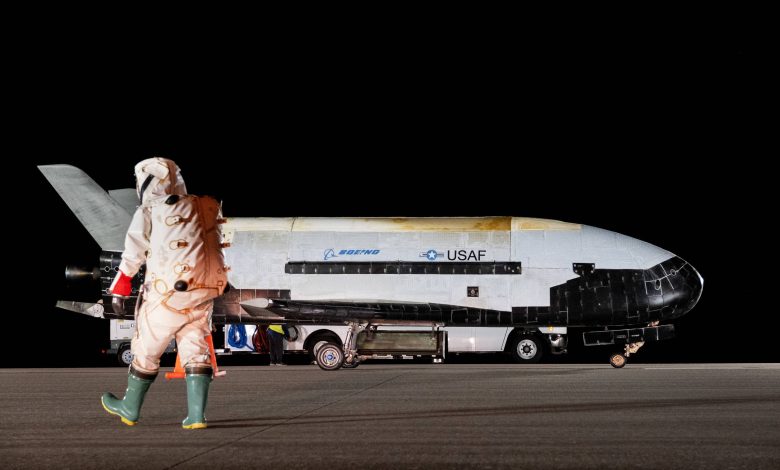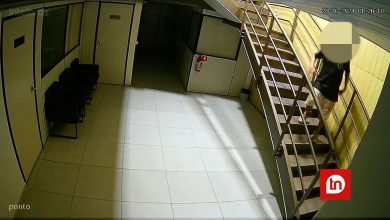
With the upcoming launch of X-37B, the United States takes another step in the escalation towards space militarization. This will be the seventh mission conducted by the fleet of unmanned mini-space shuttles developed by Boeing and now owned by the American Space Force.
The launch comes after China sent its own mini-space shuttle into orbit on its third mission, on the 14th. Nothing is known about the Chinese vehicle. As for the American one, only the exterior is known. In both cases, the military keeps the activities to be conducted in space under tight wraps.
The simultaneity seems to be a mere coincidence. The Americans had planned to launch their vehicle on December 7, but successive delays pushed the launch to next Thursday (28th) and, if not possible on that day, there will be a new attempt on Friday (29th).
Could the X-37B be used to spy on the Chinese vehicle, never seen by the public, not even in photographs?
Unlikely, although nothing can be ruled out considering the secretive nature of these missions. It should be taken into account that they seem destined for radically different orbits. While the Chinese vehicle was sent into space by a Long March 2F medium-sized rocket, in a low orbit of 333 by 348 km in altitude (data not disclosed by China, but identified and disclosed by the US Space Force), the American X-37B will be launched by a much more powerful rocket, the SpaceX Falcon Heavy.
Indeed, five years ago, when the Space Force began searching for the launching vehicle capable of putting X-37B into its mission, it indicated the need to take about 6,350 kg into a geostationary transfer orbit. It is a somewhat elongated trajectory that, at its perigee, transits at only a few hundred km from the ground, but at its apogee it goes to 35,000 km above the planet, where many of the telecommunications satellites usually orbit. With the launchers used in previous missions (the Atlas 5 and the Falcon 9 rockets), this mission profile was not even possible. Therefore, it will be the first time that such an orbit is used for an X-37B mission.
The choice seems consistent with the constant effort to test and push the limits of the vehicle (which in aeronautical jargon is referred to as “pushing the envelope”). Indeed, with each new X-37B mission, its time in space has increased. If the first flight, in 2010, lasted 224 days, the sixth, initiated in 2020, extended for 908 days – almost three years – before returning to Earth.
Interestingly, this is one of the unique characteristics of these mini-space shuttles: like their larger brothers developed by NASA and launched between 1981 and 2011, they ascend propelled by rockets and descend as gliders, using wings to guide them to a landing strip. As they are smaller and unmanned, they are even more versatile than NASA’s old vehicles and capable of much longer missions – an ideal profile for military applications.
So, what are these vehicles going to do in space? From a military point of view, they could serve essentially four purposes: force enhancement, space support, space control, and force application.
As a force enhancer, the vehicle could offer intelligence and reconnaissance (satellite-spy function), communications, and meteorology.
In space support, X-37B could be used to take satellites into space or even retrieve damaged satellites – a mission profile that already existed for NASA’s space shuttles, until the Challenger accident in 1986.
As an element of space control, it could have offensive roles (interfering with the operation of enemy satellites and even destroying them) and defensive roles (monitoring the space environment and detecting satellite attacks, avoiding them).
Finally, as a force application, it could be used to attack ground targets. According to experts, the vehicle could be equipped with precision weapons such as hypersonic missiles guided by laser or GPS, which could be used to attack targets in the middle of enemy territory.
So far, the Space Force says it has not taken weapons into space with its testing program, ruling out this last use – at least for now.
Keeping maximum discretion regarding this seventh mission, the Pentagon says it will cover “a wide range of experimental tests and objectives.” “These tests include operating the reusable spaceplane in new orbital regimes, experimenting with future space domain technologies, and investigating the effects of radiation on materials provided by NASA,” the Space Force said in a note. Translating from “military speak” to Portuguese: flying higher and farther, spying on satellites in orbit, and conducting scientific experiments.
More than that, we won’t know. Even less from the Chinese mission. The only thing that is certain is that the two greatest space powers of the 21st century are expanding the scope of their military actions in space, which, like so many things these days, sounds as inevitable as it is undesirable for the future of humanity.




